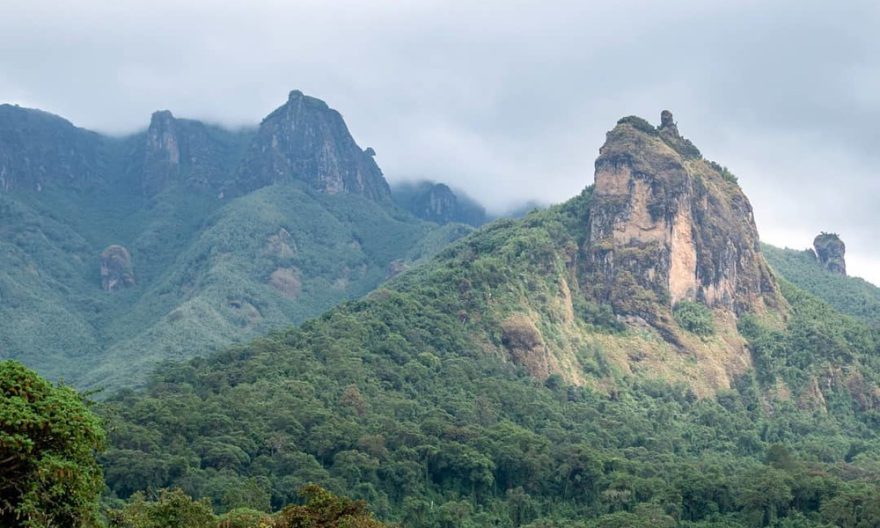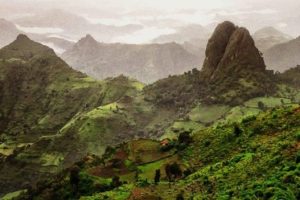
A new holiday season has dawned on us with the advent of the new Ethiopian year which is less a month young now. The new season is not only a season of blooming yellow carnations, sunshine and a feeling of respite from the cold and rain of the last three months. It is also a season of major celebrations with Ireechaaa, Meskel and Timket knocking on the doors again, for colorful celebrations with traditional songs and dances.
This is also a season of fashion as designers and clothes makers are busy looking for new ideas for their new creations. It is also the season when young and old start to prepare for the season that herald new hopes despite the difficult times. As a matter of coincidence the New Year has also ushered in new opportunities for the country with the Bale Mountains designated as natural heritage site. This augurs well both for tourism in the coming months and years.
Last week, the United Nations Educational Scientific and Cultural Organization (UNESCO) gave the amazing Bale Mountain sites the recognition they deserve although it came a little bit late. The campaign for getting the Bale Mountains registered as world heritage sites started a long time ago. This is not the first time that Ethiopia is recognize as the location of one of the most terrific mountain sceneries where exotic animals and plants are found. The Semien Mountains National Park is one of them.
Ethiopia has already has nine registered world heritage sites, including Fassil Ghebbi which is found in Gondar region, Tiya in Soddo, south of Addis Ababa, Lower Valley of the Omo which is a prehistoric site near Lake Turkana, the rock-hewn churches of Lalibela, some 645km north of Addis Ababa, Lower Valley of the Awash, Harar Jegol, the fortified historic town, Axum in Tigray and Konso cultural landscape.
Compared to other African countries, Ethiopia stands second after South Africa in the number of its heritage sites. South Africa has ten heritage sites followed by Ethiopia and Morocco that have nine heritage sites and Algeria, Egypt, Senegal and Tanzania stand seventh. Globally, Italy is the country with most heritage sites numbering 58. Ethiopia on the other hand is considered the most historical country in the world. “Ethiopia is home to some of the oldest recorded human history on Earth. In the 1970s the fossils of an upright walking ape was discovered here, dating back to 3.5 million years ago.”
UNESCO has been active in Ethiopia for many decades now and its mission is defined as being, “to contribute to sustainable human development in a culture of peace underpinned by tolerance, democracy and human rights through programs and projects in UNESCO’s field of competence Education, Natural Sciences, Human and Social Sciences, Culture and Communication, among others.”
UNESCO has also been active in promoting protecting and giving recognition to the world’s natural heritage sites. “Natural heritages refer to natural features, geological and physiological formations, and delineated areas that constitute the habitats f threatened species of animals and plants and natural sites of value from the point of view of science, conservation and natural beauty.”
The Semien natural park is the only natural heritage site in Ethiopia which was registered 1978. “ The Semien national park is, “a national park that that serves as a refuge for many endangered species, including the Walia Ibex, and Ethiopian wolf. The park was recognized as a world heritage site by UNESCO in 1978 and was included in the list of world heritage sites in danger in 1996.” Examples of natural heritages include, “plants, landscapes, forests, natural falls, caves and animals and rivers”
How are natural heritage sites selected for protection? According to available information, “If an era contains rare natural formations, like unique rock shapes or is very beautiful, or has habitats and species of animals and plants, that can only exist there, it becomes important to protect it. This also makes it possible world heritage site.” There is a tendency to confuse natural and cultural sites but the two are different. Natural heritage include forests, rivers, and animals whereas cultural heritages consist of temples, painting and artifacts among others.
The Bale Mountains National Park is now included in the UNESCO world heritage site list. “The new UNESCO site dazzles with a range of otherworldly landscapes, and is also one of the Africa’s most exiting yet quirky wildlife destinations.” This is the second national park in Ethiopia to access the list of UNESCO’s world heritage site. One may wonder what makes the Bale Mountains so special and the answer is that the mountains range is, “rising over 4000 meters, the Alpine plateau of the Bale Mountains is the highest mountain area in southern Ethiopia.”
The Bale Mountains National Parks are a habitat for 20 endemic mammals, not to mention dozens of reptiles and amphibians and hundreds of bird species. “Other wildlife often spotted in the park includes the Menelik Bushback, grey duiker, warthog, African golden wolf, colobus monkey and spotted hyena.”
The fact that the Bale National Park has earned the distinction of becoming one of the must go areas in the world has significant impact on the tourism sector as an increasing number of visitors are expected to visit the place thereby contributing to the revival of the economy of the surrounding areas. It is now up to the tourism authorities to put in place the necessary infrastructure and accommodations to make the most out of the new status of the Bale Mountains as tourism destination.
Recently, 13 new sites have been added to UNESCO’s world heritage list which lost one site while three were placed on the danger list. The World Heritage Committee holding its 33rd session has inscribed two new natural sites and 11 cultural sites on UNESCO’s World Heritage List.
Ethiopia is still fighting to get other natural or cultural heritage sites to be registered so that they can enjoy protection by UNESCO. There is also what experts call tangible and intangible natural heritages. “Cultural heritage is a fairly broad term that can apply to both the tangible and intangible heritages such as stories, songs, and celebrations we experience in the moment.” Ethiopia has applied for the recognition of Fiche
Chambalala, the New Year festival of the Sidama people. “
The other is Irreecha, is the thanksgiving festival of the Oromo people. According to information from Wikipedia, “Irreecha is thanksgiving holiday celebrating the end of winter in Oromia region of Ethiopia. The Oromo people celebrate Irreecha to thank Waaqa (God) for the blessings and mercies they have received throughout the previous year.
According to Wikipedia, “Gadaa is the indigenous democratic system of governance used by the Oromo people in Ethiopia and northern Kenya. It is also celebrated by the Konso and Gedeo people of southern Ethiopia. The system regulates political, economic, social and religious activities of the community.” Because of its uniqueness and as an expression of universal human values, the Gada Systeem has gained recognition by UNESCO and registered as intangible cultural heritage. “The Gada System, which is the social, political and cultural reflection of the traditional Oromo people was registered in the UNESCO Representative List of the Intangible Cultural Heritage of Humanity in October 2016”
The celebrations of Irreecha are a celebration of the people whose age-old cultural commitment to peace, abundance and gratitude finds expression every year here in Addis Ababa, also known as Finfinee in Afan Oromo. The celebrations are not confined to the Ethiopian capital but also reverberate throughout the Oromia region. Millions gather of ordinary people gather at specific places to connect with God as the true creator of abundance, peace and happiness.
Preparations for the annual celebrations start well before the advent of the New Ethiopian Year and gather momentum in the few weeks after New Year. People in towns and countryside prepare special clothing and other ritual instruments for the occasion. The big gathering centers for the celebrations are usually Finfinee and Bishoftu, two of the biggest traditional centers of Irreecha where people gather around lakes singing and dancing to the glory of their Waquaa or God.
Hopes for a better future of peace and abundance are on the lips of the millions of celebrants who travel hundreds of kilometers to join their compatriots in a collective expression of a festival that has been in place for the last hundreds of years and still continues to inspire new generations that have given the occasion a new and modern twist as reflected in the traditional garb,, the foods and drinks and the dances that continue well into the new year.
Of course in Bale where the Bale National Park is located, Ireechaa is going to assume a new dimension as it coincides with its inclusion on the UNESCO world heritage site, a big event of cultural significant to Ethiopia.
BY MULUGEA GUDETA
THE ETHIOPIAN HERALD SATURDAY 30 SEPTEMBER 2023





